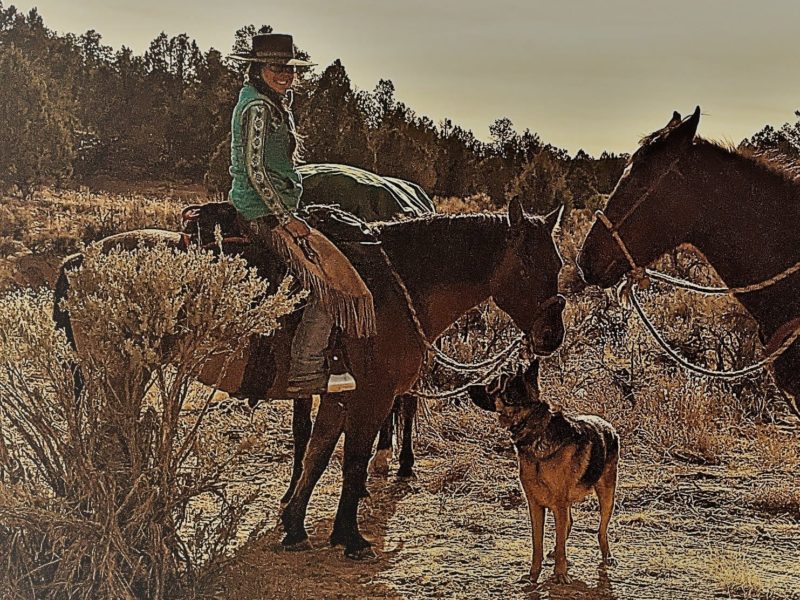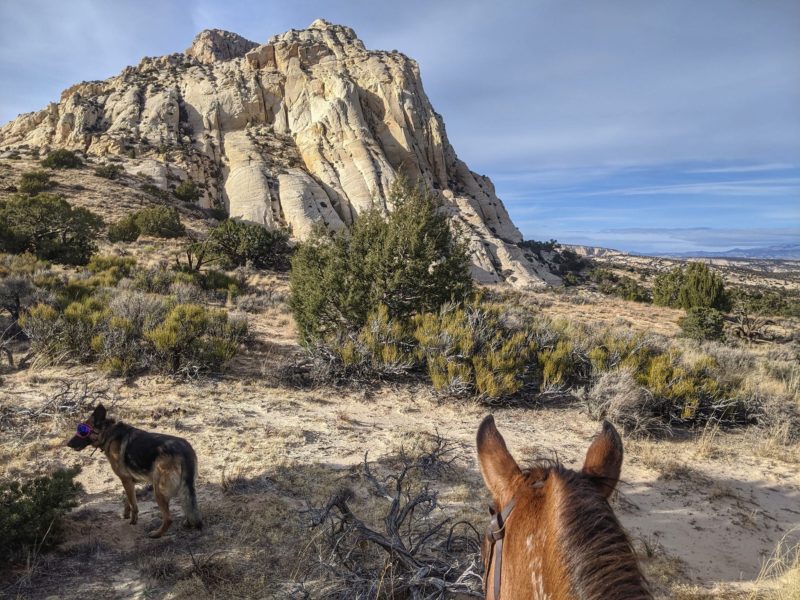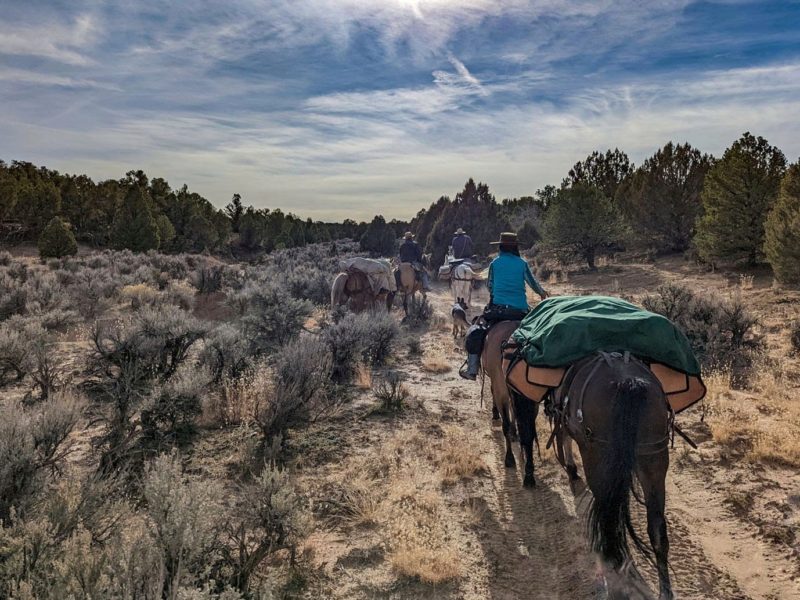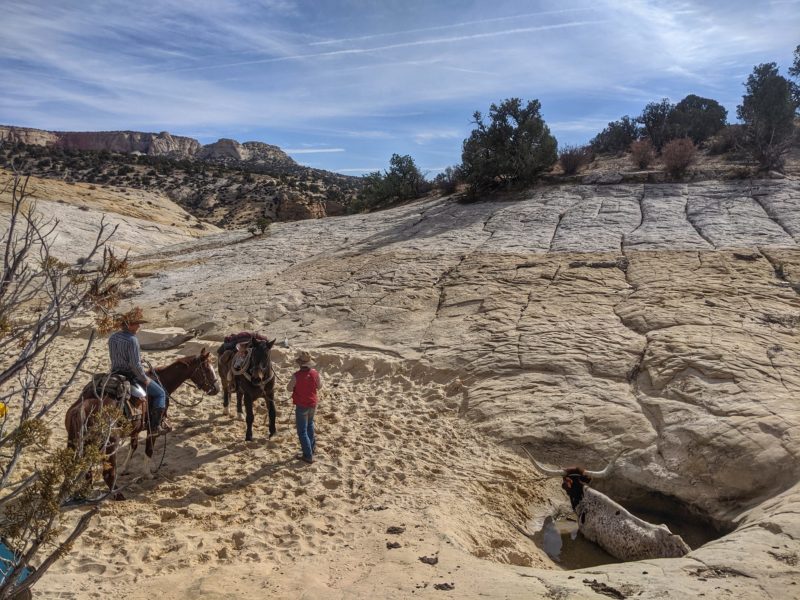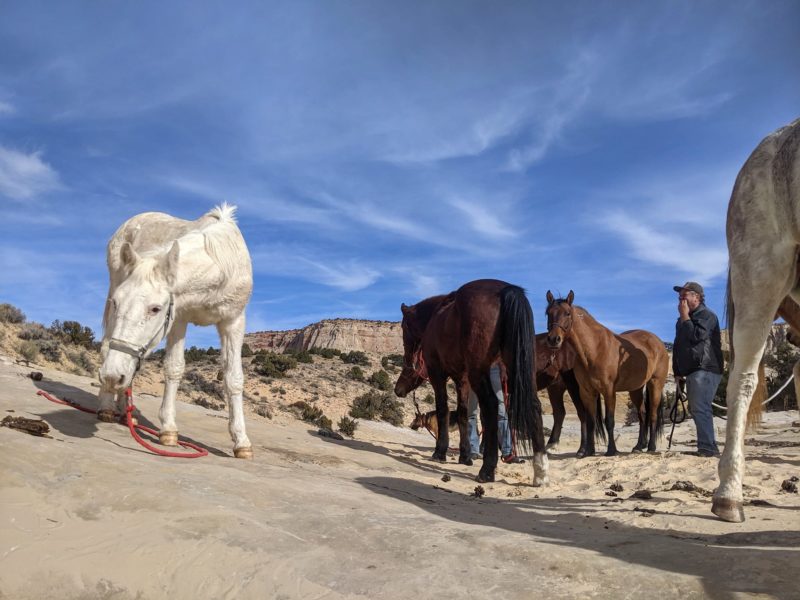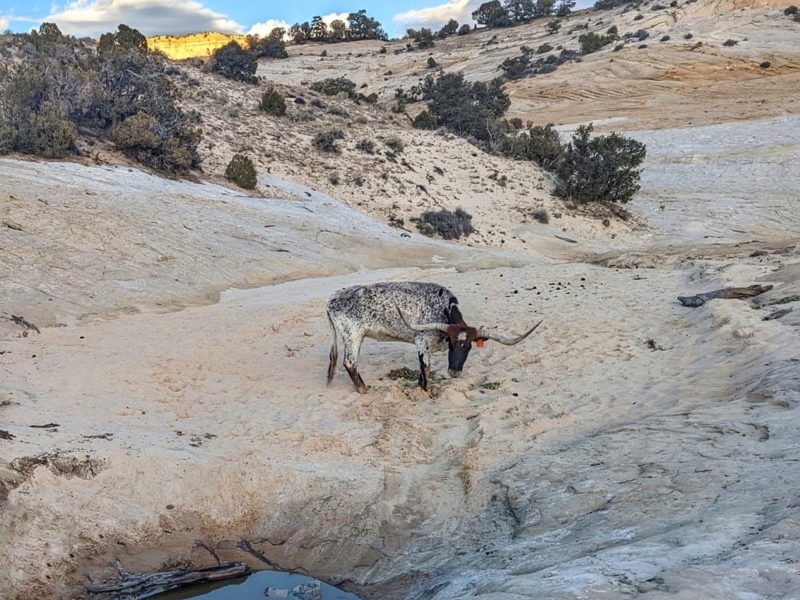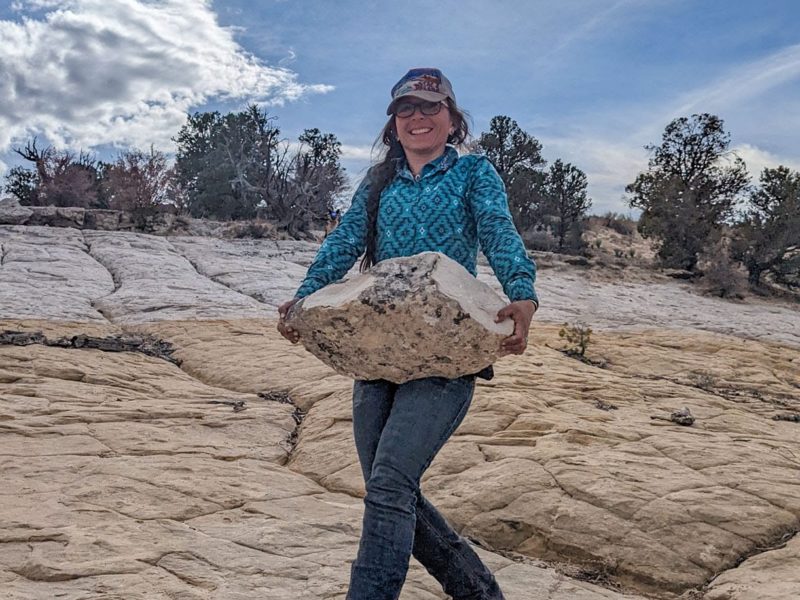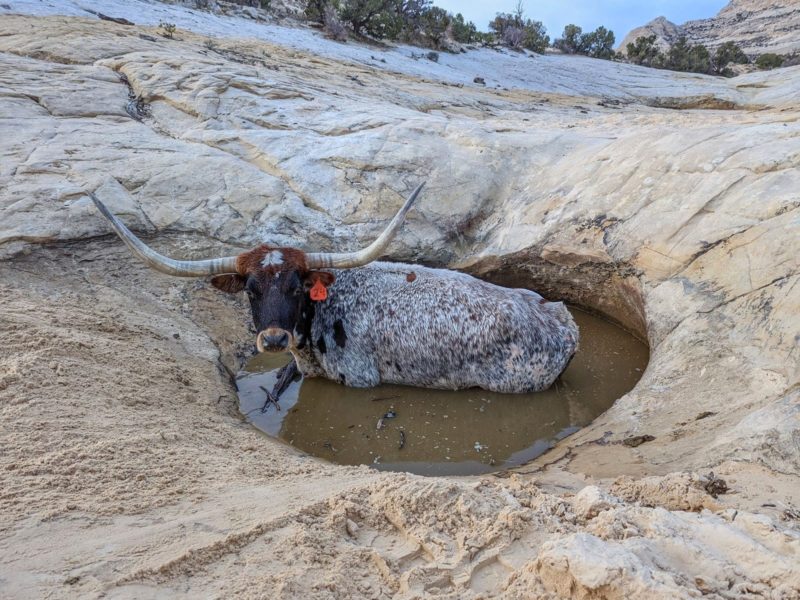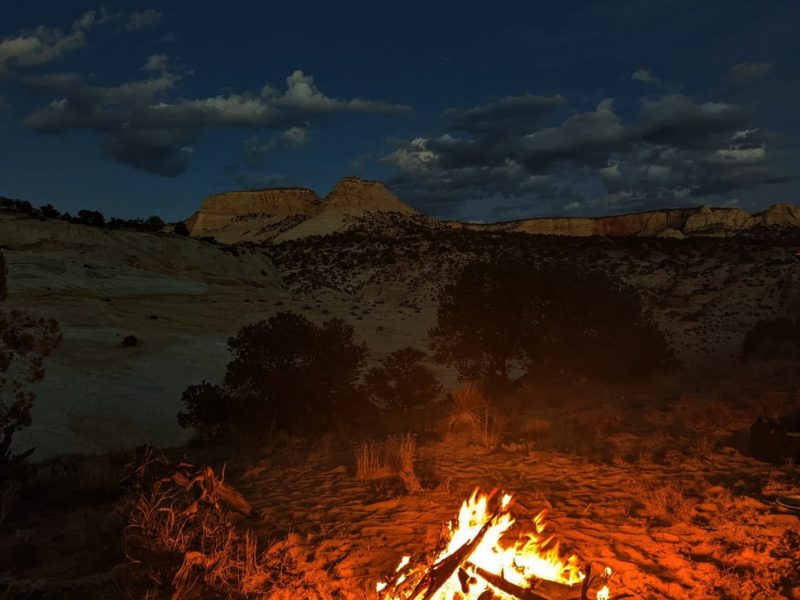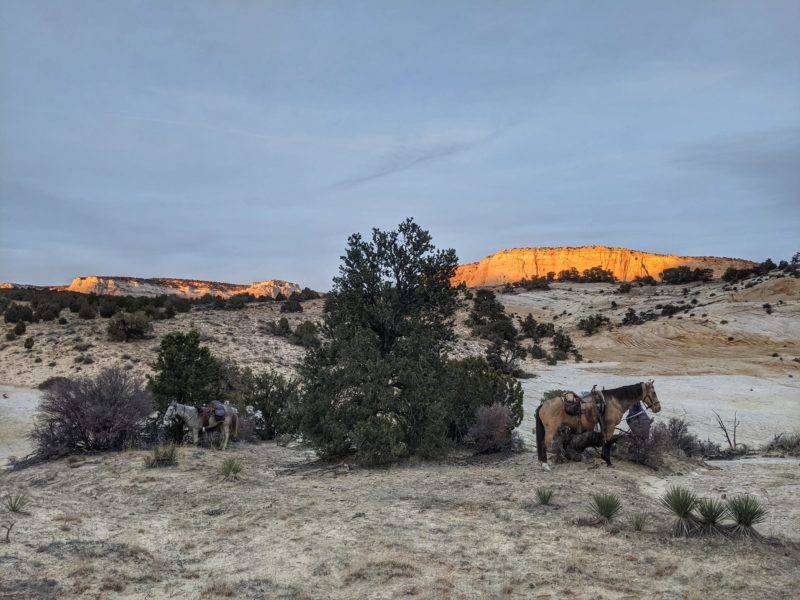This post is only a year and a half overdue. Sometimes it takes me that long to put something into perspective.
November 2021, a long-anticipated pack trip with friends into the middle of nowhere, Southern Utah. First time taking the Mustangs out of state. First time packing in the desert. First time sleeping outside on my birthday, literally under the stars because it was so warm and dry that most of us decided against setting up our tents.
I’ve always loved the desert with its unique and colorful rock formations, sandy washes and hardy, surprisingly abundant plant and animal life that’s so well adjusted to surviving under extremely arid conditions. Desert packing however is an entirely different kind of adventure.
Things had been going pretty smoothly until we reached what would be our camp site for the next few days. A colorful herd of longhorn cattle scattered as we approached. Apparently they had been drinking from what I would soon learn was called a pothole, a sandstone basin that collects rain water and may be the only water source for miles around.
When we continued to hear splashing sounds long after the last of the cattle had disappeared into the juniper and sage covered hills, we decided to investigate. What we found would drastically change our plans for the days to come.
One of the longhorns, a cow, was in the pothole, slipped or pushed in while the herd was drinking. She was desperately struggling to free herself, but the steep and slippery sandstone caused her to slide back down each time she tried to climb out.
Buttercup, as we called her both affectionately and euphemistically (she wasn’t a particularly personable bovine, making trying to help her a bit of a treacherous endeavor), was not only in a bind herself, she was also contaminating one of the only water filled potholes in the area.
In the end it took 4 days, about 200 rocks, 3 horses, 4 ropes and 7 people to free Buttercup. We ended up with a live cow only because we were determined not to let her die if we could at all help it, and because one of had a GPS capable of 2 way satellite communication (no cell service that far out).
With that we were able to, on day 2, reach the rancher who had the grazing lease in that area and give him our location. It took him and his helpers 2 days to get to us, a day longer than expected because their pack horse, a Mustang, got into quicksand. Several hours and a broken pack saddle later, he was out and they ended up spending the night to let him rest and so they didn’t have to risk another wreck trying to find us in the dark.
Instead of day riding like we had planned we would do short rides in between checking on the ungrateful cow and spend hours carrying rocks to slide into the hole in hopes of making it possible for her to climb out on her own. Efforts to pull her out had already failed and she was slowly getting weak. We were getting low on feed for our stock, clean water for humans and animals was running out, and we wouldn’t be able to stay out there much longer.
Once help arrived it took all hands on deck, several attempts and some saddle swapping, lots of coaxing the horses that were pulling and every available rope to pull the cow to safety.
She was a lot weaker but no friendlier by the time all four feet were back on dry sand. By that evening she was standing up and eating the alfalfa cubes her owner had packed in for her, and by the following morning she had wandered off to rejoin her herd.
We rode much less than we’d hoped on that trip but saving Buttercup the cantankerous longhorn was the right thing to do and made for memories I’ll never forget. Things can get wild quickly out in the backcountry. Extra rope, two-way satellite communication and at least one additional day’s worth of food for man and beast are more critical than I’d expected. And whatever you do, avoid drinking out of a cow’s bathtub if at all possible.

